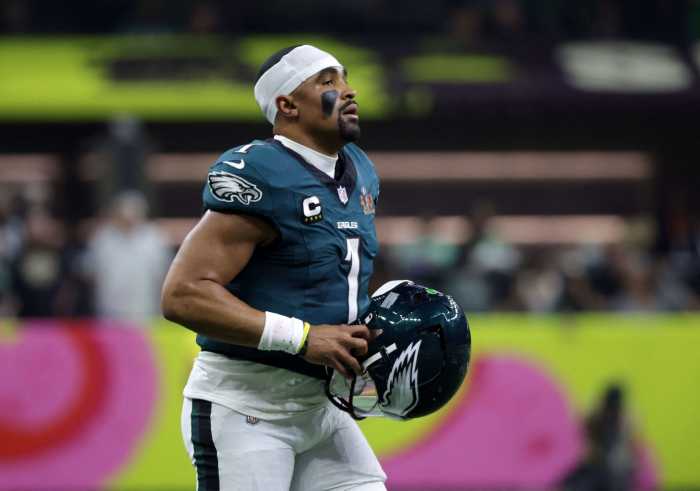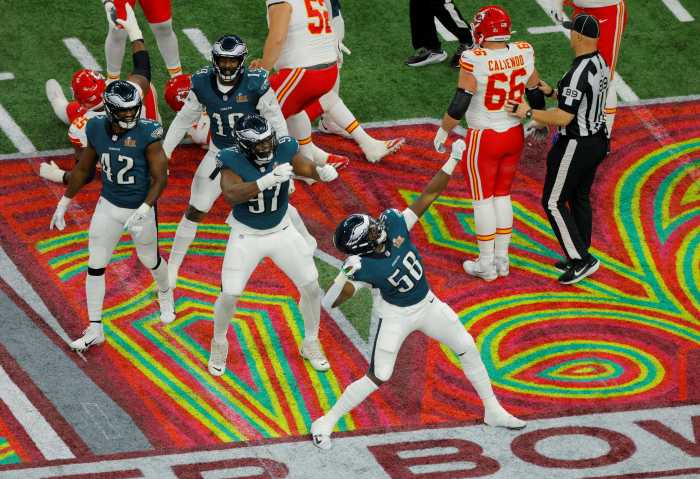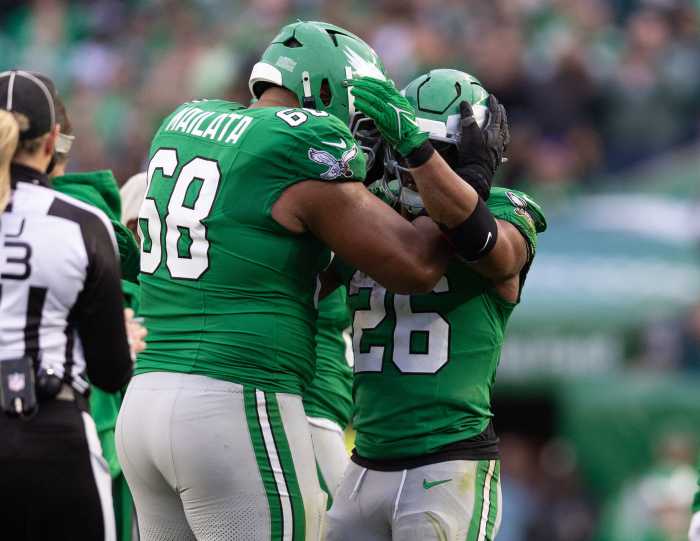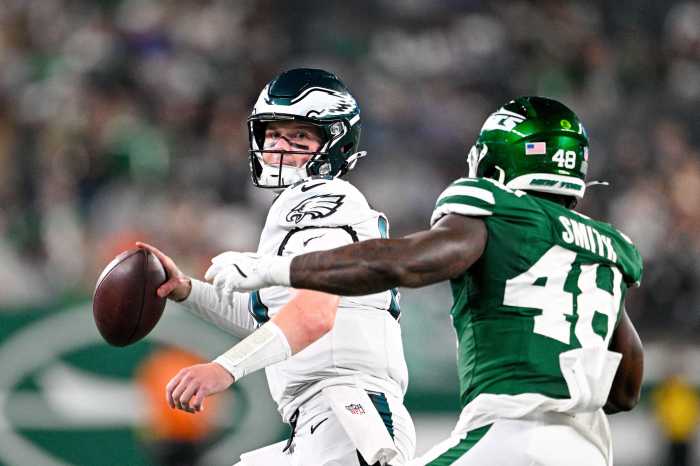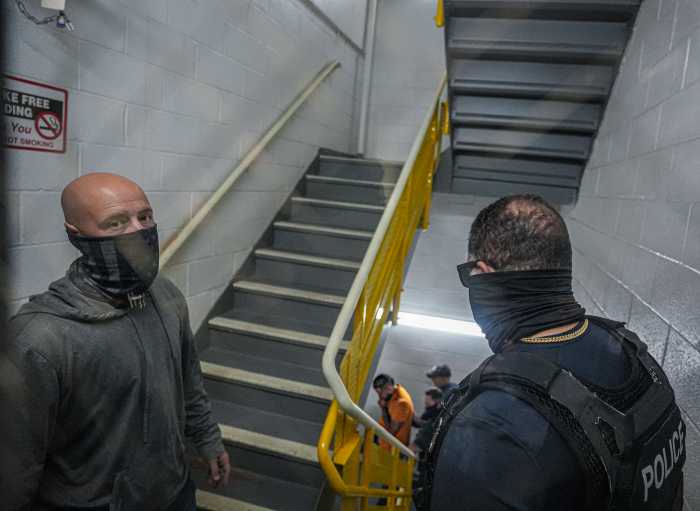The James Bradberry contract is a perfect example of how Eagles General Manager Howie Roseman manages the salary cap by utilizing the void “dummy” years, paying out bonuses, while also skillfully navigating, and purposely creating, dead cap space into future years.
James Bradberry’s 2022 Contract:
In 2022 the Eagles signed Bradberry to a 1-year contract with 4 void (dummy) years.
The contract in totality was for $7.25M, but how Howie structured it is what’s interesting.
Bradberry had a base salary of $1.035M, set up to be paid out evenly throughout the season into weekly checks of $57,500 during the 18-game regular season which equals the $1.035M. The remaining $6.215 is paid out as bonuses, but how they are paid is where it gets even more interesting.
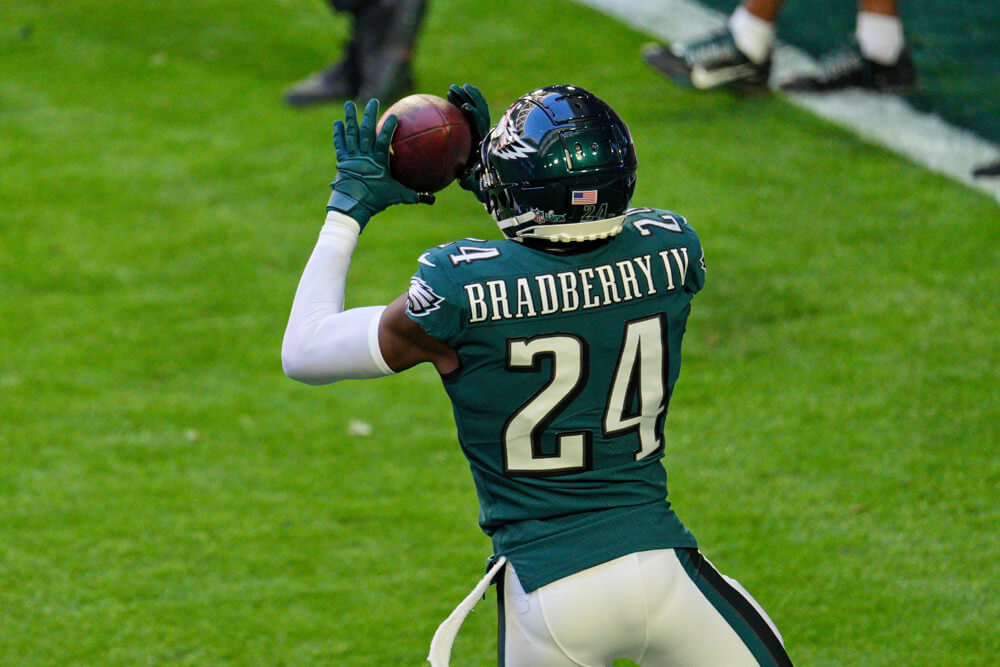
Remember those void dummy years? When you include those you see that the contract was 5 years, not 1, despite Bradberry only playing for the Eagles one season. Howie structures the remaining bonus money to be paid out equally over the life of the 5-year contract. So in year one James receives his salary of $1.035M and $1.243M (which is a one-year payout of the prorated bonus)
That leaves 4 years and $4.972M left on the contract ($1.243M a year x4)
And this is how Howie signed a player for $7.25M yet had him only count against the 2022 salary cap for $2.278M.
Are you still with me?
If Bradberry had left after the 2022 season the Eagles would have been on the hook for the remaining void-year bonuses of $4.972M as dead cap space.
But, he returned to Philadelphia and signed a new contract in 2023. So the $4.972M over the next 4 years was removed and a new deal was structured.
The New Deal:
Bradberry signed a 3-year $38M deal with $20M guaranteed. The Eagles corner gets approximately $1.2M a year base salary totaling about $3.5M over the 3 years. And, once again, 4 void years were added, so the contract is a 3-year deal paid out over 7 years.
The 4 void years are 2026–2029, but the bonuses start in 2025. 5 years of equal bonus payouts of $3.319M which totals $16.5M. Add up his $3.5M from his 3 base salaries, and the $16.5M in bonuses, you get the sum of his $20M guaranteed money. Aside from some workout bonuses of $150K a year for the 3 seasons, he is never seeing the other $18M of that $38M contract. The amount of guaranteed money is the most important number you need to pay attention to in looking at contracts.
Keep in mind the Eagles have to pay out the void years whether Bradberry is on the team or not. (Spoiler Alert, he was very unlikely to play out all 3 years)
If the Eagles use a post-June first cut on Bradberry it will result in $4.3M dead money in 2024 with $0 cap savings. So getting rid of him only opens up a roster spot, they save no money, and it brings dead cap forward. You are essentially paying him to go away. They would also be on the hook for $3.125M of dead money in 2025 but get a cap savings of $4.7M and another $3.125M dead money in 2026 with a whopping $17.9M cap savings.
In 2025 and 2026 James Bradberry will count against the cap for $7.9M worth of dead money whether he is cut now or not. So the only question for the Eagles to ask themselves is if it is worth moving on from James post-June 1 (and paying him $4.3M) just to get him off the team and free up a spot for another player. For context, they moved on from Derek Barnett last year despite being stuck with a $4M dead money hit.
Hopefully, I have illustrated the contract well enough that you have a better understanding of the money, and we can move on to evaluating if James Bradberry, or any other player structured similarly, should be cut vs kept due to their contract if they are underperforming.
Howie has shown he will not allow the finances to dictate his decisions in determining who to keep on the roster. He proved that by taking on the NFL franchise’s largest dead cap amount when he moved on from Carson Wentz. (that has since been surpassed)
Quite simply, he believes you should keep the best players on the team and move on from the mistakes. Keeping the players who are not contributing only compounds the issue. You go from one problem, dead money, to two problems, dead money, and the waste of roster spot on a struggling player.
Is structuring contracts this way a good business practice?
The Void Years:
Some believe the manipulation of dead money and the usage of void years is a Howie “Philly” special.
Well, yes and no.
The average NFL team has about 17% of their salary cap taken up by dead cap money. The Eagles have averaged $60M a year in dead cap since 2021, which leads the league. In fact, the Eagles already have $121M of dead cap on the books over the next 2 years. $66.3M in 2025 and $55.2M in 2026. (this total can change via cuts, extensions, etc., and likely will. Howie loves to shuffle it around) But, and this is a BIG but, it is also something he is doing intentionally, and that he believes to be good business.
How does it work?
In a similar way to how you can get a loan through companies like Affirm when you purchase on Amazon, and if you pay it off within a year you never pay any interest, this is the same premise, but better. Consumers can overspend at Amazon, but NFL teams all spend the same amount of money due to the salary cap. So if you are going to spend the money anyway, ask yourself “Do you want to pay for it today or later?”
The Eagles have chosen to keep their salary cap money now on a lot of contracts and pay later. The advantage is that the money will be a smaller percentage of an increasing salary cap down the road because the cap always increases, (outside of a global pandemic) thus making future cap dollars a smaller percentage of the salary cap than by using the money today. The void years stretch out how long they push out the money, and as shown with Bradberry’s contract, it can be pushed out years after the player is no longer on the team. And again, it’s interest-free!
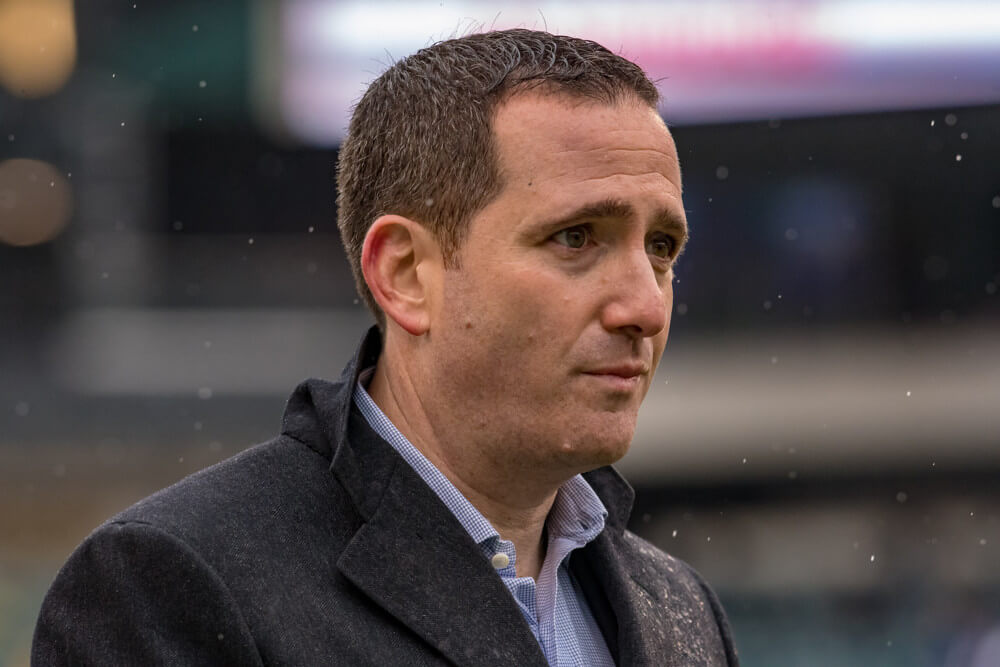
EX: A $10 million contract against a $200 million salary cap is 5% of the cap. But moving the money forward when the salary cap is projected to be 250 million is 4% of the cap. In this scenario pushing the money forward leaves $2.5M more to spend towards the current year cap. You do that with enough contracts and it adds up fast. 10 contracts structured in this manner with a savings of $2.5M per contract, equals $25M more to spend. Talk about stretching out your dollar!
Whether fans agree with the strategy is irrelevant. Howie and the Eagles believe in it, and it is not going to disappear into the void anytime soon.
As always, thank you for reading!
Follow me on X @PHLEagleNews
AP Photo/Lindsey Wasson

